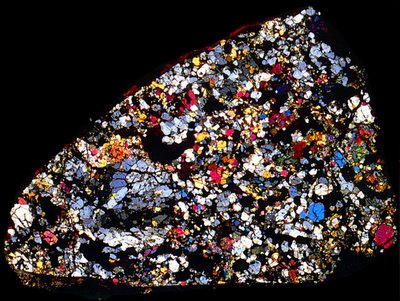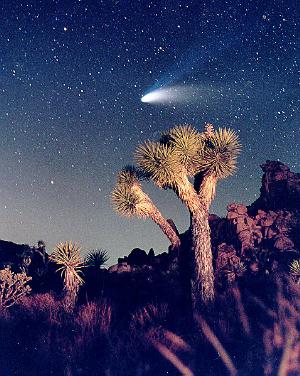
Meteor Crater
Arizona, USA
The Meteor Crater in the state of Arizona was the first crater to be identified as an impact crater. Between 20,000 to 50,000 years ago, a small asteroid about 80 feet in diameter impacted the Earth and formed the crater.
Meteor Crater
Arizona, USA
The crater is the best preserved crater on Earth and measures 1.2 km in diameter. For many years, scientists had denied that there were any impact craters on Earth. The origin of this crater has been a source of controversy for many years. The discovery of fragments of the Canyon Diablo meteorite help prove that the feature was in fact an impact crater.
Check out the meteor that these guys seen.
They were mighty lucky that this was a little one.
I found a few cool videos of meteors on google.
The picture on the right is actually "Hale Bopp" a comet, that we actually saw from 3&C a few years ago, not a meteor, but it's a cool photo.
The Peekskill Meteorite
METEOR 1
METEOR 2
METEOR 3
~Here's a very zorch meteorite~
~Warnin...Do not view this if ya are a stoner~

Click picture to enlarge
Rover's Martian Meteorite
Summary of All Meteorites
Most of our knowledge of the outer universe and of our own sun comes from spectrographic analysis of optical, radio and radar wavelength emissions. We have first hand data from a few hundred samples collected from the moon during the Apollo "flights" and some automated analysis in situ of the moon and of Mars. For the rest of the solar system we have to rely on meteorites, small fragments of rock ejected from a planetary surface when impacted by a larger primary meteorite. Incredibly, after a few million years floating about in inner space, some of these chunks come within the Earths gravitational field and crash onto the surface, some surviving almost intact. The collection of 27,500 new meteorite fragments lying on the ice of Antarctica and a resurgence of collecting from desert areas where they are both better preserved and more visible, has greatly increased our knowledge of the composition of both some of the other planets and of the possible primary material of which the planets are formed.


Hey pop cool stuff
ReplyDelete